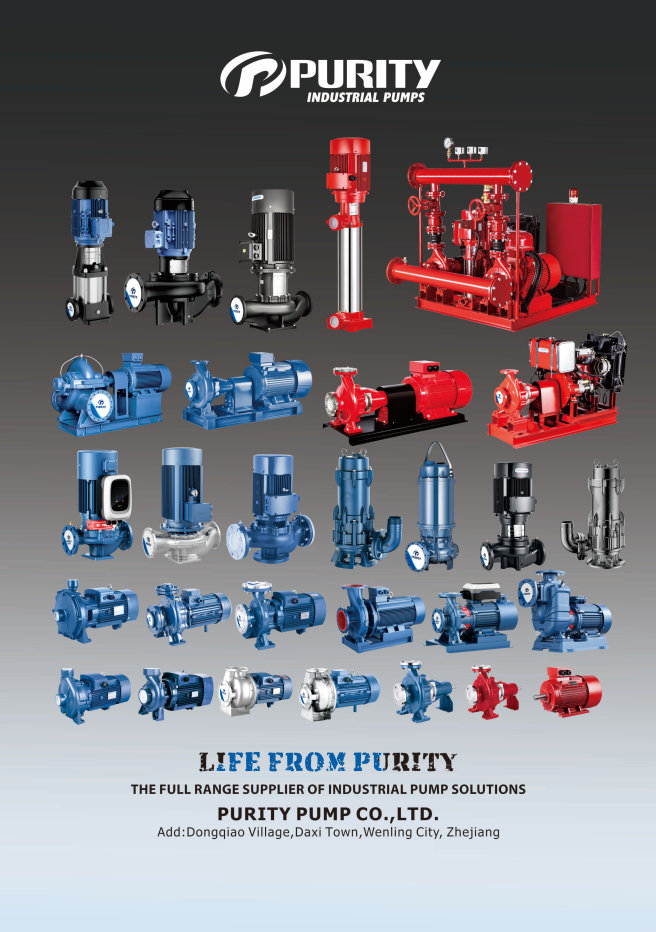Industrial water pumps are essential mechanical devices designed to increase water pressure and facilitate the movement of water from one location to another. These pumps play a crucial role across various sectors and industries, including agriculture, urban supply, commercial applications, and wastewater treatment. Given their widespread usage and critical importance, understanding the different types of industrial water pumps, their working principles, and applications is vital.
An industrial water pump converts mechanical energy into hydraulic energy, allowing fluid transfer. Most modern water pumps are powered by electricity, although alternative power sources like gasoline, diesel engines, and even solar panels are used in specific applications, especially in remote areas.
Industrial water pumps can be broadly classified into two main categories: dynamic (centrifugal) pumps and positive displacement pumps.
Dynamic pumps, also known as centrifugal pumps, operate by converting kinetic energy into potential energy. These pumps use a rotating impeller to generate centrifugal force, which propels the fluid from the pump's inlet to its outlet. Dynamic pumps are particularly favored for their continuous operation and relatively simple design, making them a popular choice in various industrial applications.

Figure | Purity Pump Project Application
1.Centrifugal Pumps: These are the most common type of industrial pump, suitable for a wide range of applications, including residential water supply, waste disposal, fire protection, and the manufacturing of food, beverages, chemicals, and oil and gas products.
2.Vertical and Horizontal Centrifugal Pumps**: Depending on the orientation of the pump shaft, centrifugal pumps can be classified as vertical or horizontal. Both types are widely used based on the specific requirements of the system.
3.Submersible Pumps: Designed to operate underwater, these pumps are ideal for sewage and stormwater management, as well as other applications requiring robust and reliable operation under extreme conditions.
4. Fire Hydrant Systems: These pumps are specialized for delivering water at high pressure and force, primarily used in firefighting applications.
Positive displacement pumps function by trapping a fixed amount of fluid and then forcing it through the discharge line. These pumps are known for their ability to handle high viscosity fluids and maintain a consistent flow rate, regardless of discharge pressure. This makes them suitable for applications requiring precise fluid transfer and high pressure.
1. Gear Pumps: Utilizing interlocking gears, these pumps provide a steady, pulse-free flow, making them ideal for handling high viscosity liquids like oils, resins, and paints. They are also used in metering and mixing operations.
2. Screw Pumps: Operating with multiple rotating screws, these pumps are used for transferring high viscosity materials, such as oils and fuels.
3. Lobe Pumps: Featuring rotating lobes that create a suction effect, lobe pumps can handle dense liquids and those containing solid materials.
4.Diaphragm Pumps: These pumps use a reciprocating diaphragm to transfer fluids, making them suitable for handling chemicals with high flash points in environments where electricity is not available.
5. Piston Pumps: Piston pumps use a piston to create suction and discharge pressure, suitable for simple liquid transfer and boosting complex pump systems.
6. Peristaltic Pumps: Also known as hose or tube pumps, they use rotating rollers to compress a tube, making them excellent for handling viscous or corrosive fluids.

Figure | Purity Industrial Pump Full Range
Positive displacement pumps require careful safety measures due to their fixed volume transfer capability. Installing a safety or relief valve on the discharge side is crucial to prevent potential overpressure situations that could damage the pump or the system.
Industrial water pumps are indispensable in various industrial processes requiring fluid transfer. Understanding the different types of pumps and their specific applications helps in selecting the right pump, ensuring optimal efficiency, reducing downtime, and minimizing maintenance costs. Dynamic and positive displacement pumps each have unique features that cater to different industrial needs, making them essential tools in the efficient operation of industrial processes. By comprehensively understanding their working principles and applications, industries can ensure smooth and effective fluid management.